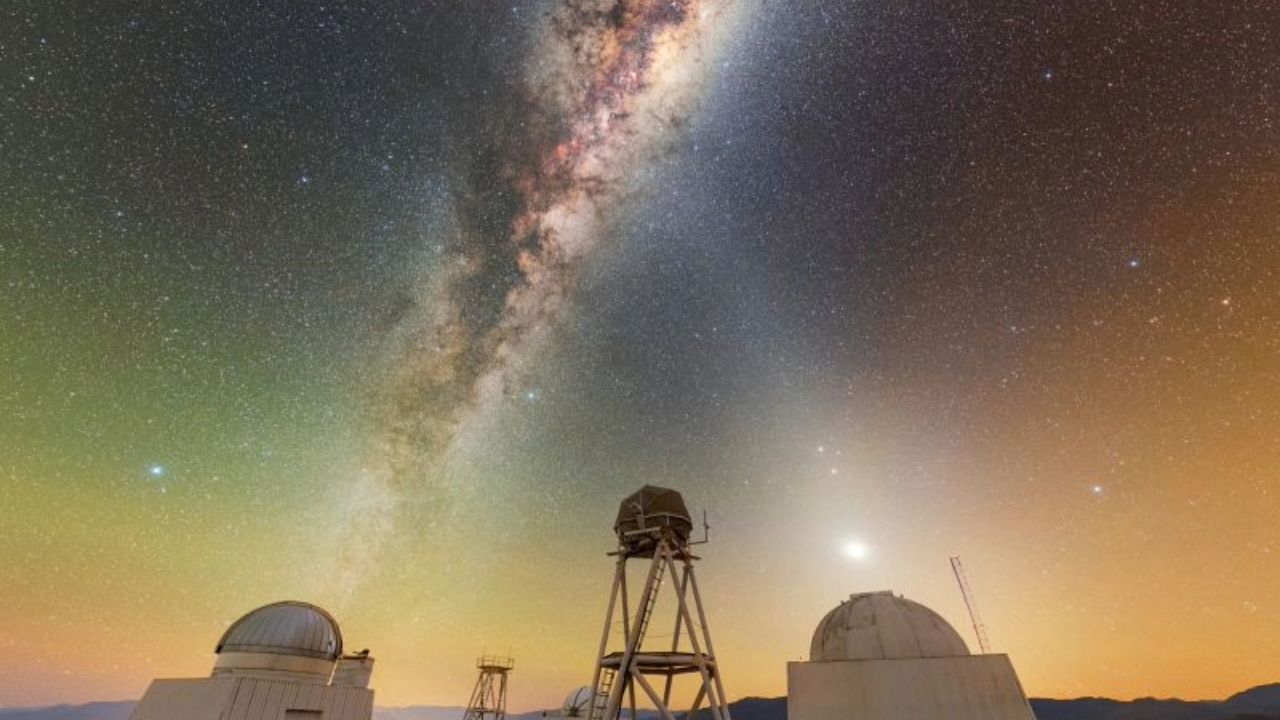The night sky above the **Cerro Tololo Inter-American Observatory** (CTIO) in Chile recently showcased a breathtaking view, as the **Milky Way galaxy** glowed prominently alongside a striking cone of **zodiacal light**. This celestial display was captured in a stunning photograph on **August 15, 2025**, underscoring the unique astronomical features visible from this renowned observatory.
Celestial Wonders at Cerro Tololo
The image reveals an x-shape formed by the intersection of the Milky Way and zodiacal light, a phenomenon highlighted in a recent post by **NOIRLab** on LinkedIn. The post proclaimed, “**X marks the spot at Cerro Tololo!**” This celestial x-shape captures the interest of astronomers and skywatchers alike, as zodiacal light extends in a triangular formation from the horizon along the **ecliptic**, the apparent path of the sun across the sky. This light originates from sunlight reflecting off particles and dust present in our solar system.
Located approximately **310 miles (500 kilometers)** north of **Santiago, Chile**, the CTIO is situated at an elevation of **7,200 feet (2,200 meters)**. Its remote location significantly reduces light pollution, allowing for exceptionally clear views of the cosmos.
Insights into Cosmic Dust
The study of zodiacal light offers astronomers critical insights into the distribution and possible origins of cosmic dust. By analyzing this light, researchers can glean further understanding of the processes occurring within our solar system, enhancing our knowledge of celestial mechanics.
As a premier astronomical research facility, the CTIO is home to nearly **40 telescopes**, which facilitate a wide range of projects. These include studies of **near-Earth asteroids**, **space debris**, and the discovery of **exoplanets**. The observatory’s mission is to provide world-class observing capabilities to the global astronomical community, supporting key discoveries and advancing our understanding of the universe.
The recent photograph serves not only as a striking visual testament to the beauty of the universe but also highlights the importance of facilities like CTIO in expanding our comprehension of cosmic phenomena. For those interested in astronomy and night sky photography, the CTIO offers an unparalleled opportunity to explore the wonders of the cosmos.
In conclusion, the illuminating display of the Milky Way and zodiacal light above the CTIO stands as a reminder of the intricate beauty of our universe and the vital role that observatories play in astronomical research.





































































